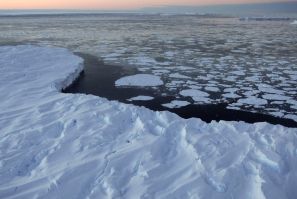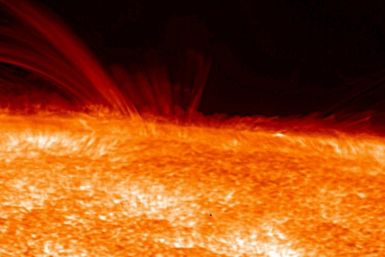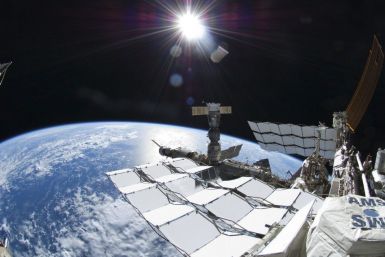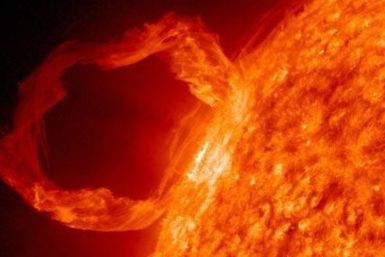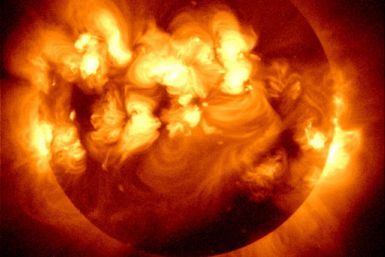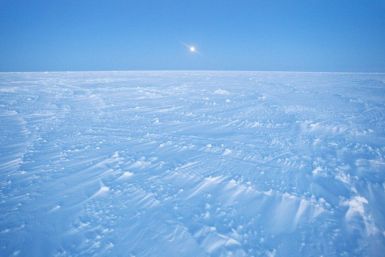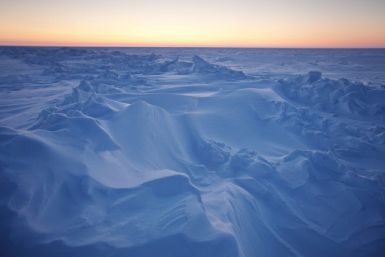The National Oceanic and Atmospheric Administration, a federal agency that focuses on the condition of the oceans and atmosphere, said that a severe solar storm could cause global chaos, wreck satellite communications and take down the most important power grids in the world for a period of years.
Researchers found for the first time that a band of antiprotons have been ringing around Earth, adding to the theory that antimatter could be trapped in Earth?s magnetic field.
A band of anti-protons have been discovered ringing around the earth, researchers have found, adding to the list of particles Earth holds within its magnetic field.
Storms are brewing some 93 million miles away and three solar flares erupted on the sun starting Tuesday, touching earth's magnetic field on Friday in the form of fast-moving "solar wind" and is blowing by the Earth.
Solar storms are brewing some 93 million miles away, and if one of them hits Earth, it has the potential to bring serious electrical and communication failures. Could this be Armageddon? The U.S. government is warning users of satellite, telecommunications, and electric equipment to prepare for possible disruptions over the next few days.
The Arctic will be practically ice-free during the summer within three decades, according to the top U.S. ice observer. But, he is quick to add, with climate change, some good comes with the bad.
Three large explosions from the Sun over the past few days have prompted U.S. government scientists to caution users of satellite, telecommunications and electric equipment to prepare for possible disruptions over the next few days.
New evidence suggesting the existence of water flowing on Mars indicates the possibility for life to exist on the Red Planet.
Two energy blasts from the sun are causing "tsunamis in space."
The first episode of a "The Office" style mocumentary premier on Thursday night in Afghanistan.
A new theory published in scientific journal Nature states that the primary collision of two moons that once orbited Earth is the reason why one side of our present moon is a bit lopsided and its far side (which is not visible from earth) is much rockier.
Scientists on Thursday said that satellite images of Arctic sea ice show that it is melting at a near-record pace.
A primordial collision of two moons that once orbited Earth explains why the present-day moon is a bit lopsided and its far side much rockier than the lunar surface facing our planet, scientists said Wednesday.
The collision of two moons orbiting Earth may have resulted in the planet's present-day lopsided moon, scientists say. Research published on Wednesday in the journal Nature states that in its younger years, Earth's moon was shadowed by a lightweight companion that was about one-thirteenth of its mass.
NASA is tracking the tropical storm Emily as it approaches Haiti and other nations.
A small second moon may once have orbited Earth until it slammed into the other one, enabling two distinct sides, a new study said. The second moon would have been about 750 miles wide and may have been created by the same collision between the planet and huge object that scientists think helped create our moon, astronomers said.
Scientists believe that they may be able to finally explain why the two sides of the lunar body are so different from each other. A new study published in the journal Nature has suggested that Earth originally had two moons in orbit around it until a second moon flattened itself to the bigger moon more than 4 billion years ago.
Once upon a time, a second moon orbited the Earth, but after a slow-motion collision with its bigger sister, our planet was left with one, scientists say. Astronomers believe that this collision, which lasted several hours, can explain the moon's symmetry.
Among the mysteries lying on the far side of the Moon are why it has a thick mountainous crust, while the near side which we see has low-lying lava plains and a much thinner crust than the far side. Scientists believe they may be able to finally explain the moon's asymmetry.
Earth once had two moons a small second moon until the two moons got smashed into each other to create a big lunar body.
Our planet's lopsided moon may have swallowed up its smaller sibling after a collision, which may have resulted in its asymmetric terrain, scientists propose. Erik Asphaug, a planetary scientist at the University of California, Santa Cruz, and his colleague Martin Jutzi recently wrote an article about the creation of the moon, which is published in the journal Nature.
A second moon orbited the Earth but a slow-motion collision with its bigger sister left our planet with one, scientists say. Astronomers believe that this collision, which lasted several hours, can explain the moon's asymmetry.




